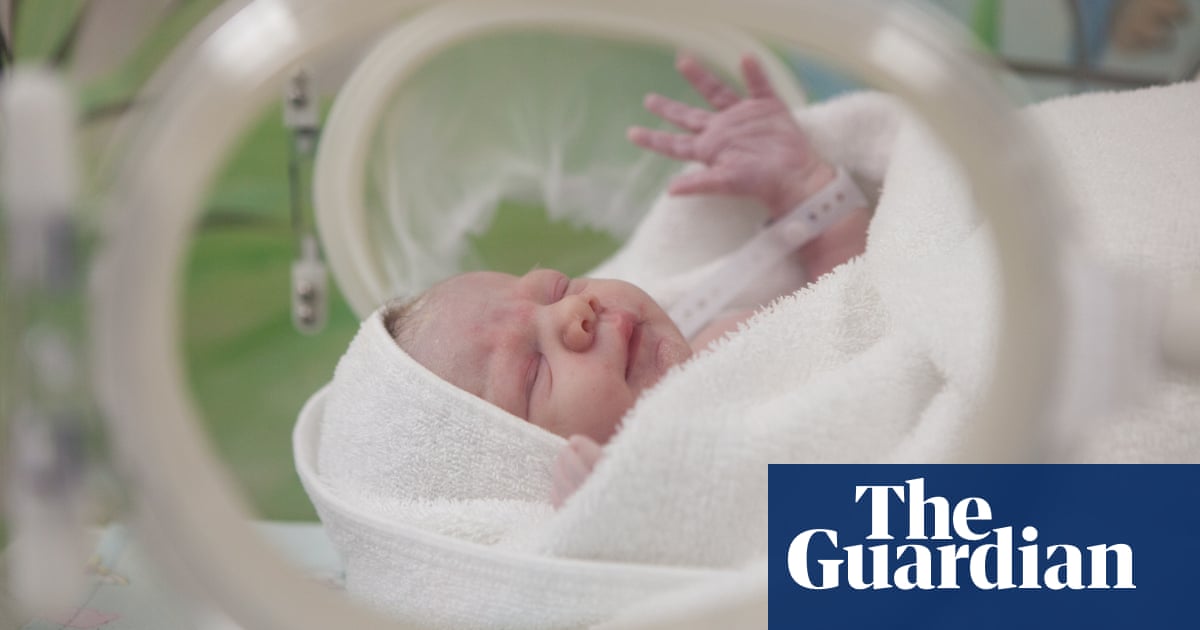Cowper’s Cut 325: NHS England’s financial recovery plan, and other fictions

It’s been a long first full week of the 2024 General Election campaign. Both of the main Westminster parties had an ‘NHS Day’.

Former PM Theresa May (who midwifed us the hardest of Brexits; oversaw the Home Office ‘hostile environment’ and Windrush scandals; and dreadfully mishandled the Grenfell response) anointed Bob the whippet’s emotional support human, Health But Social Care Secretary Victoria Atkins as the ‘One Nation’ heir for the Conservative And Unionist Party.
Did irony die in vain?

Mrs Atkins appeared on the BBC Laura Kuenssberg Show, to bid some remarkable lines on the Conservative And Unionist Party’s ‘new’ health proposals.
As if the Conservative And Unionist Party’s track record on the New (If Fictional) Hospitals programme were not enough, we were told of their plans for 100 new fictional GP surgeries, which “would be paid for by cutting the number of NHS managers to pre-pandemic levels and halving management consultancy spend across government.”
The reality is that 450 GP surgeries have closed since 2013, and since December 2016, the number of fully-qualified GPs have fallen by more than 1,700.
The CAUP also pledges to expand the scope of Pharmacy First, neatly ignoring the fact that PF’s IT links with primary care still don’t work properly; and equally paying zero heed to the warnings in the new Commons Health Select Committee report on the sector that community pharmacy is “currently creaking under the strain of funding pressures, medicine shortages and skill mix challenges.
“The current funding and contractual framework for community pharmacy is not fit for purpose. Community pharmacy funding has fallen by over 30% in real terms since 2015. For individual pharmacy owners, this has meant an annual shortfall of at least £67,000 per pharmacy. The number of community pharmacies has reduced by over 1,100 since 2015, of which 34.9% were in the most deprived communities.”
Oooops.

Challenged on the New (If Fictional) Hospitals Programme’s records of (ahem) delivery, the Secretary Of State For The Next Five Weeks sought to have us believe that the Covid pandemic affected construction. It’s wonderful to see Mrs Atkins further revealing her initially-unsuspected talent for bone-dry irony. You can quite see why Bob chose her as his emotional support human.
She also claimed that the Government is aiming for two more hospitals to open by the end of the financial year: this might have been slightly more convincing if she had mentioned which two.
The New (If Fictional) Hospitals Programme is beset by many problems, including but not limited to a £4 billion funding shortfall; the gradual admission that participants will miss the deadlines; and the fact that few people want to work on it, leading to reliance on … external management consultants, of the kind whose cutbacks will apparently fund the Conservatives’ new fantasy health policies.

As the Commons PAC report notes, the N(IF)HP “has depended heavily on external consultants since its creation, with 62% of posts filled using consultancy services in February 2023. DHSC estimates it will spend a further £842 million on consultancy services between 2023–24 and 2030-31”.
One must have a heart of stone not to laugh.
Delightfully, Mrs Atkins used the interview to align herself with the Unreality-Based Community, claiming that “Labour would stop all construction projects, all capital projects, they’ve promised it in their health mission”.

Labour have, in reality, not promised this in their health mission.
Asked if the Conservative manifesto would contain a plan to fix social care, Mrs Atkins added, “we already have a 10-year plan to improve and to provide the social care that we want our grandparents, our parents, to have.” It’s always fun to see 24 words used where one would do.
Labouring back to 18 weeks
The Labour opposition’s ‘health day’ majored on their plans to return to 18 weeks within the next Parliament. This is not a new pledge. It seems unlikely that we will see many new pledges from Labour, given the message discipline of their campaign so far. (It was, however, quite overshadowed by their cack-handed attempts to deal with their former shadow health secretary Diane Abbott.)

Off-puttingly, Labour’s plan was coached in 1990s-style rhetoric about “sending in crack teams”. There is surely a case study in the use of this form of ‘active language’ (“crack teams”, “hit squads” and the dreary like) as a reliable diagnostic to spot that there is no actual detailed, thought-through plan.
Labour’s salvo highlighted the excellent but probably inimitable work of Guys and St Thomases’ HIT (High-Intensity Theatre) lists for elective surgery: those who read the Sunday Times piece I highlighted some months ago will have noticed the significant elements of a strong and stable professional culture underlying this approach. This is not present everywhere, nor indeed widely enough.
More to the point, some academic studies indicate that the HIT-type approach is not reliably more efficient in all circumstances: this review from the Association Of Anaesthetists. It concludes that “while there is a perception of increased surgical output for one surgeon, there is no evidence of increased productivity compared with two surgeons working in parallel.
“There is potential for overlapping surgery to have some positive impact in situations where turnover times between cases are long, operations are short (<2 h) and where ‘critical portions’ of surgery constitute about half of the total operation time. However, any advantages must be balanced against safety, ethical and training concerns.”
And ‘doing HIT squads, but everywhere’ is only a workable plan in the NHS England ‘Everything Everywhere All At Once’ sense, i.e. not at all.
But will Labour’s 18 weeks plan work?

Waiting list expert Dr Rob Findlay of Insource reviewed Labour’s pledge that funding 40,000 extra RTT operations a week can fulfil their plan to return the RTT waiting list to 18 weeks by the end of the next Parliament.
Rob’s conclusion is that this is achievable, but there are real risks to its delivery from hospital bed demand from higher clinical priority emergency care and cancer patients.
Labour also focused attention on another big number: around 148,000 people who died in 2023 whilst waiting for care on the NHS. They cited data from NHS trusts, showing that record numbers of people passed away last year before receiving the treatment for which they were waiting.
The number of people died on waiting lists last year has more than doubled since 2017/18, when the figure stood at around 60,000. The figures are also higher than in 2021, when the country was still in the midst of the Covid pandemic. This article gives a decent explanation of the methodology used in this Labour FOI.
Junior doctors call pre-election strike
This will come as no surprise to the Government.
— Dr Robert Laurenson (@RobLaurensonD4P) May 29, 2024
We made this clear to them.
They knew their actions would trigger this. https://t.co/UuZqOif5hw
The BMA junior doctors committee announced a new strike, to be held just before the day of the General Election. They will take action from 27 June - 2 July.
There seems to be widespread bafflement about why this timing was chosen. I suspect it was down to one small reason, and one big reason.
The small reason is that in any industrial negotiation, parties should self-impose a deadline by which demonstrable progress has to be made. This simply avoids one party of the negotiation playing the other party by breadcrumbing and stringing things out until, for example, a strike mandate expires. From what I have been told about the negotiations, this was probably the small reason.
The big reason sits with an understanding of the current JDC leadership being better organised and more strategic than it had been in the 2015-16 new contract dispute, which they lost badly. Whether people agree with the junior doctors’ case or not, their message discipline has been good: their spokespeople articulate and well-briefed.
This leads to the conclusion that these are not stupid people. As such, their thought process may have gone something like this: PM Rishi ‘The Brand’ Sunak is miles behind in the polls, and his campaign launch was sub-triumphant.
Whether he is a true believer that the Conservatives can win, or whether he is a realist and gets that the job now is minimising defections to Reform to cap seat losses as best possible (and landing an incoming Labour government with bigger bills), Mr Sunak now needs gamechangers.
Striking a deal to end the dispute would be one such gamechanger (presumably, any deal would have to be post-dated to 5 July). Mr Sunak could play this as the Conservatives taking the bull by the horns to prevent more lost NHS capacity, although it scores less highly in the “clear plan” stakes.
But the BMA JDC leaders would potentially have a deal that their committee could assess and approve to recommend to their membership. Perhaps more usefully, this could explicitly tell Labour the shape of an acceptable deal.
NHS national leadership narcissism
It is also funny for @AmandaPritchard to state that “the subject of the NHS will be front and centre in the election campaign - as it always is”.
— Andy Cowper (@HPIAndyCowper) May 28, 2024
Erm, apart from 2019, 2017, 2015, 2010, 2005 and 2001. https://t.co/HYSFnciQR9
It is conceivable that I am not NHS England chief executive Amanda Pritchard’s biggest fan. When I read her recent message to the service asserting that “the subject of the NHS will be front and centre in the election campaign - as it always is”, I laughed until I stopped.
Erm, yes, Amanda. That is, apart from the general elections of 2019, 2017, 2015, 2010, 2005 and 2001.
The last general election campaign where the NHS was a huge issue was 1997. “24 Hours To Save The NHS”, and all that.
The 2019 GE campaign had some suitably embarrassed Labour shadow cabinet people trying to peddle Corbynite ‘NHS privatisation’ bullshit. So unembarrassed were the Conservative And Unionist Party by this that they came up with the risible ‘40 New (If Fictional) Hospitals’ manifesto commitment.
In 2017, the campaign was dominated by attempts at relitigating Brexit and Theresa May’s ‘Dementia Tax’ proposals getting karmic blowback from 2010.
In the 2015 campaign, almost nobody had spotted Simon Stevens’ single-handed abolition of the 2012 Lansley reforms via the Five-Year Forward View.
There were exceptions. OK: there was one exception.
The health lobbying sector tried to mark the 2015 campaign by the universal issuing of ‘health manifestos’, up to which the main parties were invited to sign.
This was a masterpiece in wasted effort lobbying.
In the 2010 campaign, people largely fell for Mr Cameron’s ignorance-based untruth that “we’ll stop the top-down reorganisations of the NHS that have got in the way of patient care”.
Cue Andrew Lansley, and the biggest redisorganisation in NHS history, which still doesn’t quite get the credit it deserves for our current parlous state of affairs.
The Lansley reforms never get the full credit they deserve for the mess we are in today. Once implemented in 2012, they cut management by 45% of its 2008-9 level. Add that to flat real-terms funding 2010-19, and the performance collapse we have seen since is easy to understand. https://t.co/RUmHMSAQ0E
— Andy Cowper (@HPIAndyCowper) May 31, 2024
The NHS leadership institutional narcissism that leads to such a nonsensical claim as Mrs Pritchard’s that the NHS is always front and centre in general elections is a huge part of the NHS’s culture problem.
Screaming Blue purdah
Chris. NHSE have sent all of us some pretty restrictive guidance on the pre-election period i.e purdah. #justsaying 👀
— Jacqui Smith (@Jacqui_Smith1) May 30, 2024
NHS England’s national director of [coughs] strategy Chris Hopson took to Kiss (formerly Twitter) to laud the performance of primary care, armed by NHS Digital’s latest round of GP appointment data.
It is perhaps worth remembering that back in March, 99.2% of nearly 20,000 GP BMA members voted ‘No’ to reject the 2024/25 GP contract proposed by NHS England. This offered general practice a 2.23% funding increase for 24-25.
It was wryly amusing to see Bart’s and BHR chair Jacqui Smith respond to him that NHS England had just sent the service a set of “pretty restrictive guidance on the pre-election period, i.e. purdah”.
What’s sauce for the goose is source for the gander.
The price of financial recovery
The Sunday Times’ Shaun Lintern reported that NHS England has cut £50 million form its vaccination and disease screening budget as part of its financial recovery plans.
In the midst of a measles and whooping cough outbreak, @NHSEngland has cut almost £50m from its vaccinations and disease screening budget to fill its spending blackhole. In the Sunday Times print edition: pic.twitter.com/NEz4qhbphe
— Shaun Lintern (@ShaunLintern) June 2, 2024
What could conceivably go wrong?

HSJ’s Henry Anderson writes about the NHSE update to the 24-25 finance regime.

And the Nuffield Trust’s Sally Gainsbury and Sophie Julian provide this excellent update on the financial health of the NHS, as well as this clear explainer, which highlights an important fact. Which is that the national-level records of how the NHS budget has actually been spent in terms of allocations to services are not really fit for purpose.
The following section, drawn from the NT’s own analysis of provider accounts, is particularly important: “funding for NHS acute, ambulance and NHS mental health care services has grown much faster than overall funding, with average annual increases of 4.4%, 5.2% and 5.3% in real terms respectively. As a result, these services have increased their share of total funding, with the largest share increase seen in mental health, which increased its share of the total from 8% in 2016/17 to just over 9% in 2022/23.
“By contrast, funding for NHS community health care services has grown at a much slower rate, increasing by only 3.2% over the entire seven-year period – the equivalent to average annual increases of just 0.5% a year, leading to a reduction in its share of total funding from 8% in 2016/17 to 7% in 2022/23.
“The largest decrease in funding was in the local authority public health grant, which fell by a real-terms 21% between 2016/17 and 2022/23 (despite a brief increase for two years during the pandemic), decreasing its share of the total from 3.6% to 2.3%.
“Funding for GP primary care has grown at a similar rate to overall funding growth, at 3.3% average real terms a year, entailing that its share of the total has stayed constant at around 8% over the period.
“Funding for community pharmacy, optometry, dentistry and on prescriptions has also fallen in real terms over the period, resulting in the share of the total going to those services also shrinking.
“ … funding for the NHS services that primarily provide those forms of care (NHS community care services, primary care and local authority public health services) grew in real terms by less than half a percent on average a year between 2016/17 and 2022/23. Perhaps even more strikingly, funding for NHS community health care services was cut in real terms in three out of the six years between 2016/17 and 2022/23.”
Sometimes, the chickens coming home to roost are also coming home to roast.
The high price of maternity service incompetence

FOI data given to The Guardian by Robert Rose of Lime Solicitors revealed that the NHS spent £4.1 billion over the last 11 years settling lawsuits over babies who suffered brain damage when being born. It paid out just under £3.6 billion in damages in 1,307 cases, in which parents were left to care for a baby with cerebral palsy or other forms of brain injury.
NHS Resolution, which defends hospitals in England accused of medical negligence, spent another £490 million on legal fees.
Alan in the LOOP
Cut’s third-favourite Conservative Health Secretary Matt ‘Alan’ Hancock, The People’s Partridge, was reinstated to the Conservative And Unionist Parliamentary Party whip on Wednesday, and vice versa.
Alan’s return to the ranks of official Tories is, of course, nothing whatsoever to do with ensuring that he gets his Loss Of Office Payment money - no matter how hard he had to beg.
The very thought of The People’s Partridge being out of the LOOP …
Recommended and required reading
New Ipsos polling for the FT shows that voters expect their taxes to rise after the General Election: 56 per cent expected Sir Keir Starmer’s Labour party to raise taxes, and 52 per cent said the same of Prime Minister Rishi Sunak’s Conservatives.
BBC News reports on patient safety issues with electronic patient records systems leading to deaths.
Commons Health Select Committee report on pharmacy finds that “the current funding and contractual framework for community pharmacy is not fit for purpose. Community pharmacy funding has fallen by over 30% in real terms since 2015. For individual pharmacy owners, this has meant an annual shortfall of at least £67,000 per pharmacy.
“The number of community pharmacies has reduced by over 1,100 since 2015, of which 34.9% were in the most deprived communities. A complete overhaul of the community pharmacy contractual framework is therefore needed, with a focus on reducing complexity and ensuring mechanisms to fund both dispensing and clinical service delivery, avoiding a situation where one pays for another.”
The Observer reports that the number of patients stuck in NHS mental health units in England by delayed discharges despite being clinically ready to leave has reached its highest level in at least eight years.






